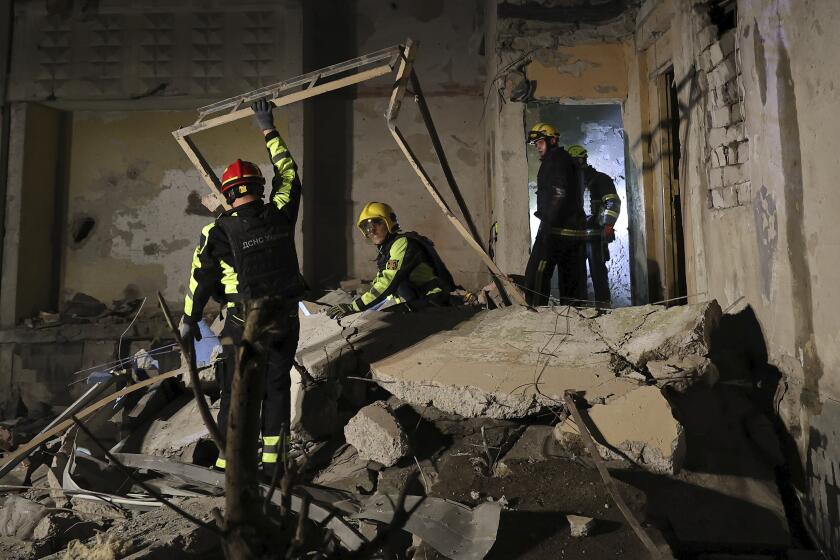Taking spying to new heights
The Pentagon said Thursday that it intends to spend $400 million to develop a giant dirigible that will float 65,000 feet above the Earth for 10 years, providing unblinking and intricate radar surveillance of the vehicles, planes and even people below.
“It is absolutely revolutionary,” Werner J.A. Dahm, chief scientist for the Air Force, said of the proposed unmanned airship -- describing it as a cross between a satellite and a spy plane.
The 450-foot-long craft would give the U.S. military a better understanding of an adversary’s movements, habits and tactics, officials said. And the ability to constantly monitor small movements in a wide area -- the Afghanistan- Pakistan border, for example -- would dramatically improve military intelligence.
“It is constant surveillance, uninterrupted,” Dahm said. “When you only have a short-time view -- whether it is a few hours or a few days -- that is not enough to put the picture together.”
The project reflects a shift in Pentagon planning and spending priorities under Defense Secretary Robert M. Gates, who has urged the military services to improve intelligence and surveillance operations while cutting high-tech weaponry costs.
If successful, the dirigible -- the brainchild of the Air Force and the Pentagon’s research arm -- could pave the way for a fleet of spy airships, military officials said.
However, it marks the return to a form of flight that has stirred anxiety and doubt since the 1937 Hindenburg disaster. Thirty-six people were killed when that airship went up in flames in New Jersey.
The military has used less-sophisticated tethered blimps -- called aerostats -- to conduct surveillance around military bases in Iraq. But flying at 65,000 feet, the giant airship would be nearly impossible to see, beyond the range of any hand-held missile, and safe from most fighter planes.
And its range would be such that the spy craft could operate at the distant edges of any military theater, probably out of the range of surface-to-air missiles as well.
The Air Force’s intelligence, surveillance and reconnaissance abilities have improved dramatically in the last five years with the expansion of the Predator and other drones. Although such craft can linger over an area for a long time, they do not watch constantly.
The giant airship’s military value would come from its radar system. Giant antenna would allow the military to see farther and with more detail than it can now.
“Being able to observe threats [and] understand what is happening is really the game-changing piece here,” Dahm said.
The dirigible will be filled with helium and powered by an innovative system that uses solar panels to recharge hydrogen fuel cells. Military officials said those underlying technologies -- plus a very lightweight hull -- were critical to making the project work.
“The things we had to do here were not trivial; they were revolutionary,” said Jan Walker, a spokeswoman for the Defense Advanced Research Projects Agency, the Pentagon’s research arm.
The Air Force has signed an agreement with DARPA to develop a demonstration dirigible by 2014. The prototype will be a third as long as the planned surveillance craft -- known as ISIS, for Integrated Sensor Is the Structure, because the radar system will be built into the structure of the ship.
While the military says the craft is closer to a blimp than a zeppelin -- which has a rigid external structure -- officials usually call the project an airship. Blimps get their shape from helium gas pressure.
The Pentagon has not yet awarded a contractor to build the prototype. Earlier work was done by Northrop Grumman in Redondo Beach -- as well as Baltimore and other locations -- and by Lockheed Martin in Palmdale, Calif.; Akron, Ohio; and Denver.
--
More to Read
Sign up for Essential California
The most important California stories and recommendations in your inbox every morning.
You may occasionally receive promotional content from the Los Angeles Times.










